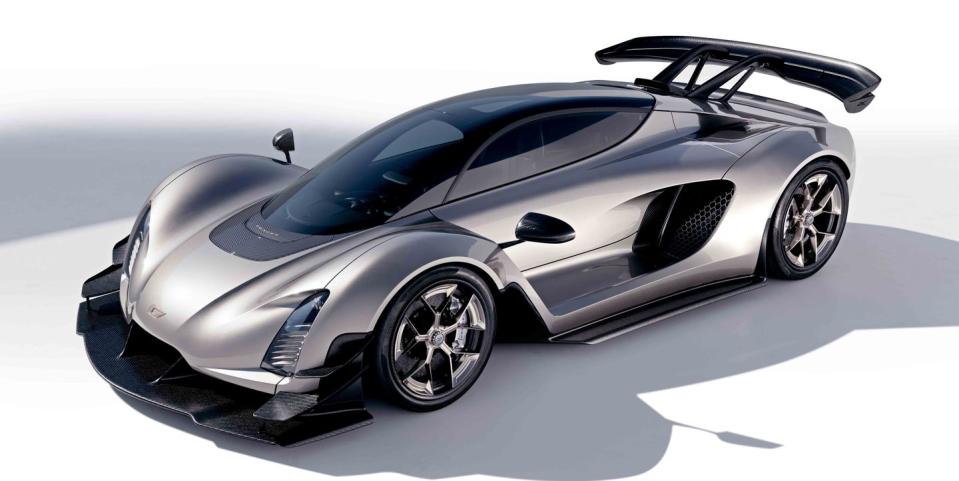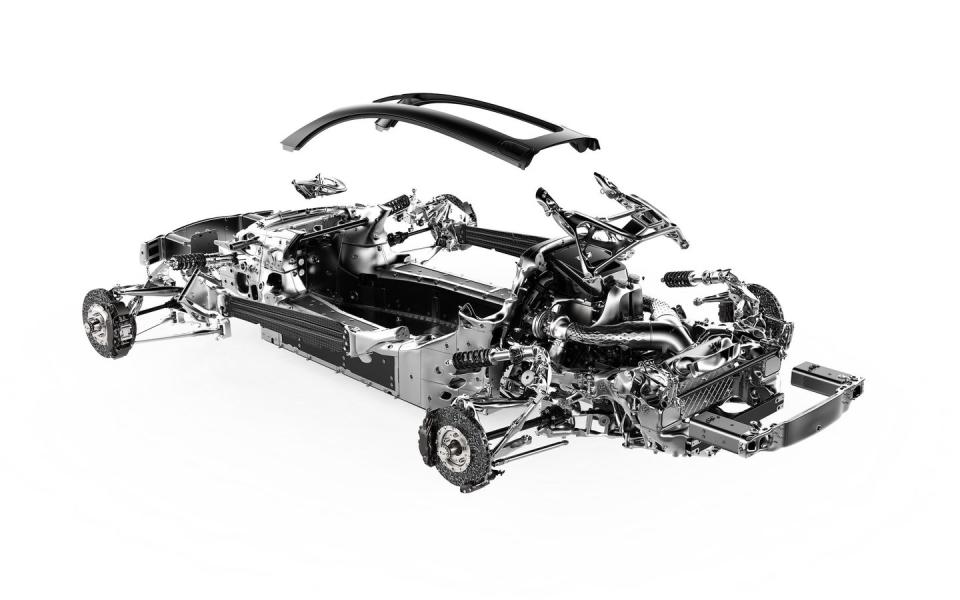3D-Printing the Czinger 21C Supercar Shows Us the Future of Car Making

The Czinger 21C supercar is fast and a little revolutionary, but the manufacturing process that went into it could change the world.
Czinger uses additive manufacturing, or what we call 3D printing, to make parts that are then glued together by robots.
The Czninger manufacturing method is being exported around the world.
At first glance, it was just another supercar being hyped by its millionaire maker as the fastest thing since Warp Factor 6. Granted, the Czinger 21C was fast—the tandem-seated carbon-fiber-over-aluminum-spaceframe hybrid superbeast had lapped Laguna Seca in 1:25.446 seconds. There was no disputing that, it said so right there in the press release:
“Czinger, the trailblazing company that uses revolutionary design and manufacturing technologies to build state-of-the-art, homologated high-performance vehicles, has set a new lap record at WeatherTech Laguna Seca Raceway, smashing the old record by an astonishing two seconds!”
Note the exclamation mark! True, the 21C had a proprietary 2.88-liter twin-turbo V8 located right behind its two tandem seats, aided and abetted by an 800-volt electric drive system with one motor for each front wheel making a total of 1233 bhp. So it could do it.
Having seen so many such releases, however, we were skeptical. For instance, the release said, “lap record.”
“We don’t record lap records outside of sanctioned race laps,” said the WeatherTech Raceway track spokesman we called.
The lap record at WeatherTech Raceway Laguna Seca is held by Helio Castroneves, who turned a 1:07.722 in a Penske Indy car during the CART race in 2000. That’s quicker than 1:25.446, isn’t it? Well, this record is for production cars, see, and the Czinger beat the Randy Pobst-driven McLaren Senna by two seconds. The difference is that McLaren actually manufactured 500 Sennas and sold them to customers. Czinger hasn’t made any 21Cs that you can buy and won’t before 2023 or so. We could nitpick semantics like “lap record” and “production” all day.
But it would be a mistake to dismiss the Czinger 21C supercar just because of some over-anxious publicity stunt.
The biggest news about the Czinger is not how fast it’ll go, but how it and its maker will change the way cars are manufactured. For the last 118 years, since Henry Ford built the first assembly line in Highland Park, Michigan, cars rolled down a line and had parts added to them by human workers. Those parts were cast, stamped, extruded, sintered, or machined. Then all the parts were bolted, riveted, welded, or even glued together. Once you did enough of that, you had a car.
Kevin Czinger, for whom the lap-record supercar is named, has a different idea, making him potentially the Henry Ford of the new millennium.
Instead of all that extruding, stamping, bolting, and riveting, Czinger has developed a system based around additive manufacturing, or additive-layer manufacturing, which is the industrial production name for 3D printing. AM is a computer-controlled process that creates three-dimensional objects by depositing materials in layers in whatever shape they’ve been computer-programmed to become. In the case of car making, the material is usually some kind of aluminum alloy, but there are many, many materials that can be used.
Czinger didn’t invent additive manufacturing, 3D printing, or robots, of course, but he has a new way of bringing them all together.

Wait, who’s Czinger? Kevin Czinger is something of a manufacturing revolutionary. He has a manufacturing facility in Torrance, California, unlike any you may have seen. In one huge room are a number of large, industrial AM machines printing parts, or adding layers until they’ve printed a part. In another room is a circle of robots centered around whatever it is they’re manufacturing. As the parts are printed and then delivered to the robots, the robots grab them in their computer-controlled hands and glue them together. Glue enough of them together and you have a car.
Czinger is putting together not only the manufacturing process and facility I saw in Torrance, but has plans to set up similar, custom-built facilities all over the world. In most applications, you get a much more efficient part in terms of increased strength and decreased weight. In the conference room where we were talking there were a number of automotive assemblies, all looking a little like the creature in the Alien movies. I said that I like the look of a brake assembly, for instance.
“That’s taking almost 50% of the mass out of a combined subsystem,” Czinger said.
On the end of the conference table was an entire rear assembly of a car. Czinger walked over and picked the whole thing up. By designing everything through CAD, then downloading the design to the AM printer, the part can be made much lighter, with less material, and in a truly optimized shape.
“This is digital manufacturing, as it will be in the future,” Czinger said. “Today, we’re printing at a rate that if you took the very fastest machine on the planet, we’re printing 15x faster than that.”
He worked with the makers of AM machines to get the speed and accuracy he wanted. He sees what he’s doing as a revolution akin to the move from typewriters to computers—specifically, the first IBM Selectric typewriters that had two lines of memory.

 Yahoo Autos
Yahoo Autos 